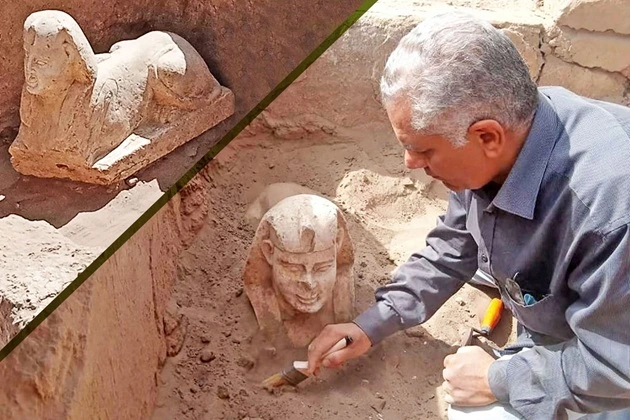Archaeologists saw more than just a smile on the mysterious figure’s face. While exploring the Temple of Dendera, archaeologists discovered a well-preserved statue of the Sphinx with Emperor Claudius’s facial features.

The Temple of Dendera is a large ceremonial complex with an area of 40,000 m2. In the center of the complex are ruins of the Hathor sanctuary, built during the Middle Kingdom and standing until the time of the Roman Emperor Trajan. During recent excavations, Egyptologists came across a Roman structure east of the main complex, where a temple dedicated to Horus is located.
On the lower level of the building, there is a large Byzantine-period pool for collecting water. It was there that researchers discovered a Roman-era statue of the Sphinx. The Sphinx is depicted wearing a nemesis, a royal headdress worn by the pharaohs. Visit. A F R I N I K . C O M . For the full article. Uraeus, an Egyptian cobra, is sculpted above his forehead, symbolizing sovereignty and royal and divine authority.
Interestingly, the Sphinx’s muzzle is very similar to the face of the Roman Emperor Claudius. “The statue is magnificent; the royal features are depicted quite accurately. Traces of a smile can be seen on the edges of the Sphinx’s mouth, and it has a dimple on both sides,” Heritage Daily quotes the head of the study.
The Roman Emperor Claudius ruled Egypt from about 10 BC to 54 AD. As the “pharaoh” of Egypt, Claudius assumed the royal title of “Tiberius Claudius, emperor and ruler of rulers, beloved of Isis and Ptah, the strong bull of the stable moon on the horizon.”